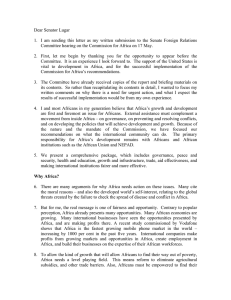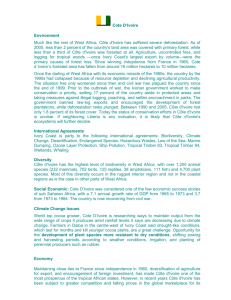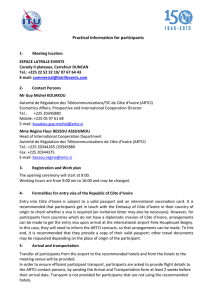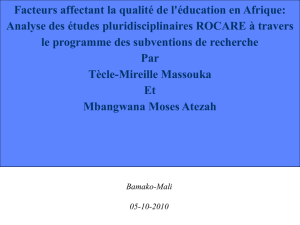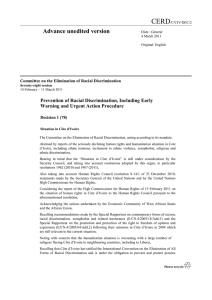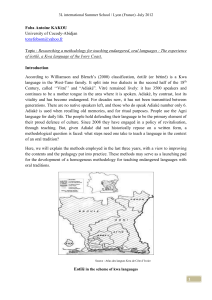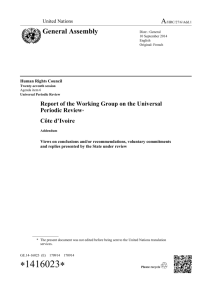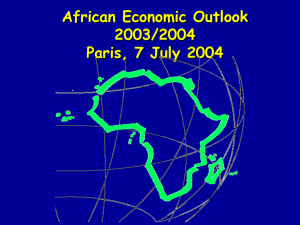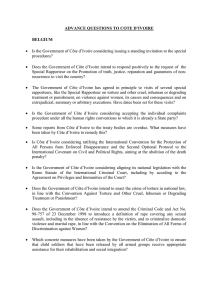Forum on implementation of WTSA decisions
advertisement
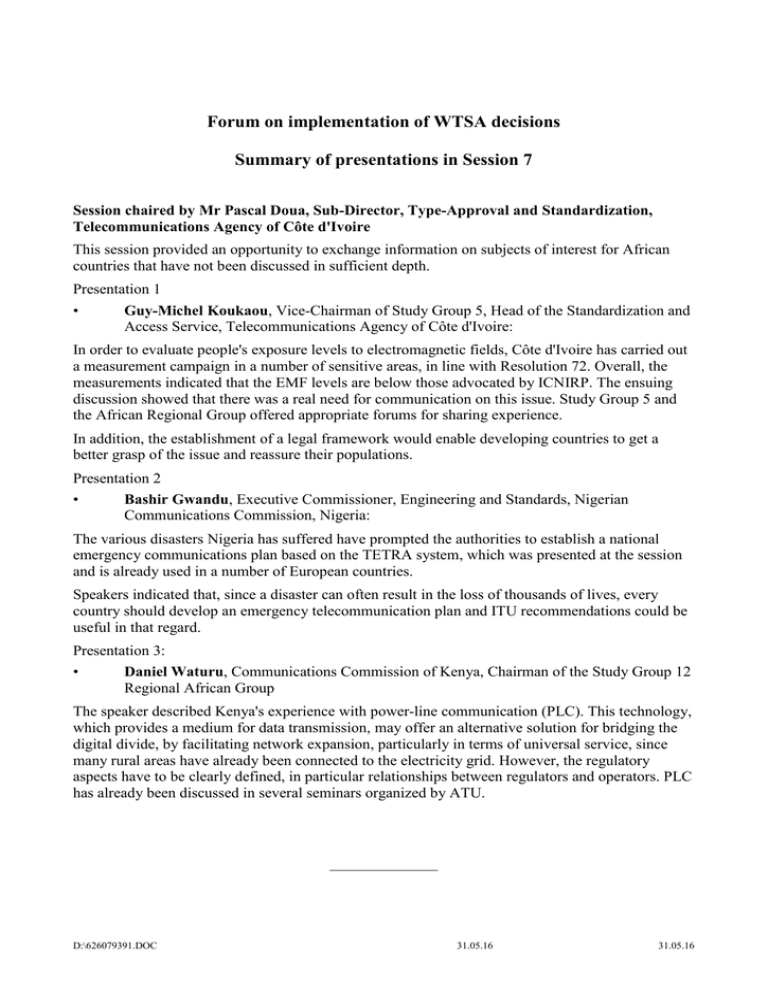
Forum on implementation of WTSA decisions Summary of presentations in Session 7 Session chaired by Mr Pascal Doua, Sub-Director, Type-Approval and Standardization, Telecommunications Agency of Côte d'Ivoire This session provided an opportunity to exchange information on subjects of interest for African countries that have not been discussed in sufficient depth. Presentation 1 • Guy-Michel Koukaou, Vice-Chairman of Study Group 5, Head of the Standardization and Access Service, Telecommunications Agency of Côte d'Ivoire: In order to evaluate people's exposure levels to electromagnetic fields, Côte d'Ivoire has carried out a measurement campaign in a number of sensitive areas, in line with Resolution 72. Overall, the measurements indicated that the EMF levels are below those advocated by ICNIRP. The ensuing discussion showed that there was a real need for communication on this issue. Study Group 5 and the African Regional Group offered appropriate forums for sharing experience. In addition, the establishment of a legal framework would enable developing countries to get a better grasp of the issue and reassure their populations. Presentation 2 • Bashir Gwandu, Executive Commissioner, Engineering and Standards, Nigerian Communications Commission, Nigeria: The various disasters Nigeria has suffered have prompted the authorities to establish a national emergency communications plan based on the TETRA system, which was presented at the session and is already used in a number of European countries. Speakers indicated that, since a disaster can often result in the loss of thousands of lives, every country should develop an emergency telecommunication plan and ITU recommendations could be useful in that regard. Presentation 3: • Daniel Waturu, Communications Commission of Kenya, Chairman of the Study Group 12 Regional African Group The speaker described Kenya's experience with power-line communication (PLC). This technology, which provides a medium for data transmission, may offer an alternative solution for bridging the digital divide, by facilitating network expansion, particularly in terms of universal service, since many rural areas have already been connected to the electricity grid. However, the regulatory aspects have to be clearly defined, in particular relationships between regulators and operators. PLC has already been discussed in several seminars organized by ATU. ______________ D:\626079391.DOC 31.05.16 31.05.16
